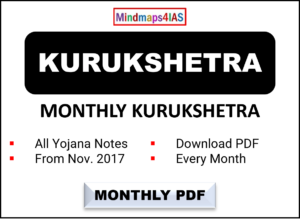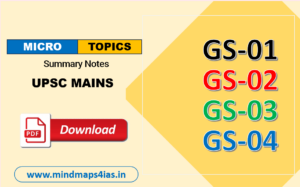Relevance: Earthquakes are significant geophysical phenomena included in the UPSC CSE syllabus, covering disaster management, geography (plate tectonics and seismic zones), preparedness, and mitigation strategies. Understanding earthquakes is essential for comprehending India’s seismic vulnerability.
Why in the News?
On January 7, 2025, a powerful earthquake measuring around 7 on the Richter scale struck southern Tibet, near the Nepal border. This earthquake resulted in approximately 100 fatalities and damaged around 1,000 houses. The epicenter was located about 75 kilometers northeast of Mount Everest, with no major damage reported in Nepal. This quake is noted as the most powerful in the region since the catastrophic earthquake in April 2015 in Nepal, which caused nearly 10,000 deaths.
Key Takeaways
- Frequency of Earthquakes:
- According to the United States Geological Survey (USGS), there have been 10 earthquakes of at least magnitude 6 in the affected area over the past century. This frequency is attributed to the unique movements of tectonic plates that make up the Earth’s crust.
- What is an Earthquake?:
- An earthquake is an intense shaking of the ground caused by movement beneath the Earth’s surface. It occurs when two blocks of the Earth suddenly slip past one another, releasing stored-up ‘elastic strain’ energy in the form of seismic waves that spread through the Earth.
- Tectonic Plates:
- The Earth’s outermost layer, known as the crust, is fragmented into tectonic plates. The edges of these plates are called plate boundaries and consist of faults. The tectonic plates move slowly, sliding past one another and colliding. They get stuck due to rough edges until enough stress builds up to cause an earthquake.
- Hypocenter and Epicenter:
- The location where an earthquake starts beneath the Earth’s surface is called the hypocenter, while the point directly above it on the surface is known as the epicenter.
- Prediction of Earthquakes:
- Currently, accurate prediction of earthquakes is not possible as it requires precursory signals indicating a significant quake is imminent. No equipment exists to reliably identify such precursors.
Why is the Himalayan Zone Seismically Active?
- Tectonic Collision:
- The Himalayan mountain range began forming approximately 40 to 50 million years ago due to the collision between the Eurasian and Indian tectonic plates. Both plates have similar densities, leading to uplift and formation of mountains.
- Continued Subduction:
- The ongoing stretching of the Eurasian plate causes it to sink beneath the Indian plate, a process that continues today.
- Seismicity Due to Collision:
- According to USGS, seismicity in the Himalayas results from continental collision between India and Eurasia, which converge at a rate of approximately 40-50 mm/year.
- Historical Seismic Activity:
- Since 1950, at least five earthquakes with magnitudes greater than 7 have struck the Hindu Kush region. The region’s unique tectonic formation includes multiple fault lines and convergence points for various seismic forces.
- Hazardous Seismic Zones:
- The western Himalayas are recognized as one of the most hazardous seismic zones globally. Scientists warn that this region, spanning approximately 2,500 kilometers from Hindu Kush to Arunachal Pradesh, is due for a significant earthquake exceeding magnitude 8.
- Energy Accumulation Along Fault Lines:
- A substantial amount of energy has accumulated along fault lines due to ongoing tectonic interactions, which can only be released through major earthquakes.
Most Earthquake-Prone Countries
- Several Asian countries are highly prone to earthquakes; notably, China and Indonesia experience significant seismic activity.
- Japan records the highest number of earthquakes globally based on relative frequency.
- Indonesia stands out as the most earthquake-prone country with 2,212 earthquakes (magnitude 4 or above) recorded.
- China has experienced more devastating earthquakes historically than Indonesia.
| Rank | Country | Number of Major Earthquakes (1990-2024) |
|---|---|---|
| 1 | China | 186 |
| 2 | Indonesia | 166 |
| 3 | Iran | 109 |
| 4 | Japan | 98 |
| 5 | United States | 78 |
| 6 | Turkey | 62 |
| 7 | India | 58 |
| 8 | Philippines | 55 |
| 9 | Italy | 23 |
Source: NOAA (1990-2024 data based on events exceeding $1 million in damages, a death toll of 10 or more, or a magnitude of 7.5 or greater.)
India’s Vulnerability to Earthquakes
- India ranks as the seventh most earthquake-prone country globally with a history of 58 significant earthquakes.
- Approximately 59% of India’s land area is at risk for moderate to severe seismic events capable of registering intensity VII or higher on the MSK scale.
- India’s vulnerability arises from its geographical position at the convergence of multiple tectonic plates and unregulated construction practices amid rapid population growth.
Beyond the Nugget: Theory of Plate Tectonics
- The Earth’s surface comprises seven major tectonic plates and several minor ones that move a few centimeters annually over semi-molten layers beneath.
- As these plates move apart or collide, they can unleash powerful movements known as earthquakes.
Types of Plate Boundary
- Slippage Along a Fault
- Earthquake Wave Types
- Earthquakes generate seismic waves causing ground shaking; these include body waves (P and S waves) and surface waves (Love and Rayleigh waves).
Body Waves
- Primary (P) Waves: Travel through solids, liquids, and gases; compressional waves alternating between compression and expansion.
- Secondary (S) Waves: Travel only through solids; shear waves where rock particles slide past one another.
Surface Waves
- Confined near Earth’s surface; include Love waves (shear waves) and Rayleigh waves (similar motion to water particles).
This comprehensive overview encapsulates essential facts about earthquakes’ mechanisms, their significance in Himalayan regions, and global patterns—key knowledge areas for UPSC aspirants focusing on geography and disaster management topics.
















